Group Quiz: Electrostatics, Electrodynamics
1/51
There's no tags or description
Looks like no tags are added yet.
Name | Mastery | Learn | Test | Matching | Spaced |
|---|
No study sessions yet.
52 Terms
Electrostatics
Study of electric charges in stationary form
Electrification
too few or too many electrons (most objects or matter are mutually charged)
(adding or removing electrons from an object, electrification happens)
Coulomb
6.3 X 1018 electron charges
Methods of Electrification
1. Friction
– transfer of e- by rubbing objects together
(one object is giving or taking electrons to the other) ( it depends on the item or the object or the matter that is being rubbed together) (ex: metal rod rub it with the carpet. Metal rod will be electrified)
2. Contact (conduction)
– transfer of e- by touching an electrified object to another object
(if phone is electrically or negatively charged and my cup is neutrally charged, if it touch this cell phone here and gets electrified. The cup has negative charge. If the key has positive charge, the cup touch then the cup has positive charge. It happens both ways)
3. Induction
– charged & uncharged objects do not touch

Balloon and baby boy are neutrally charged. If the balloon rubs on top of on the baby head. It is call friction.
The balloon is taking electron, so it has negative charge. Baby boy hair has positive charge.
balloon and baby hair is attract.
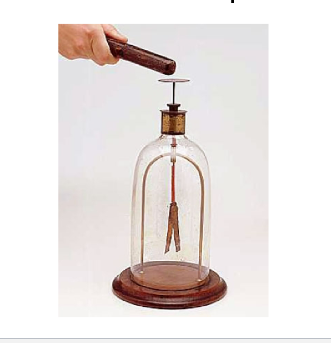
Electroscope (old school one)
(the rub is negative charge. The bell is vacuum sealed)
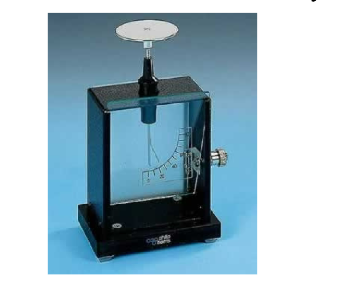
Electroscope that measures the amount of static electricity
(the measurement would be a little bit more accure)
Contact Electrification
electroscope will have a negative charge after the rod has a negative charge touches the electroscope. (Opposite attract, same charge revolved)
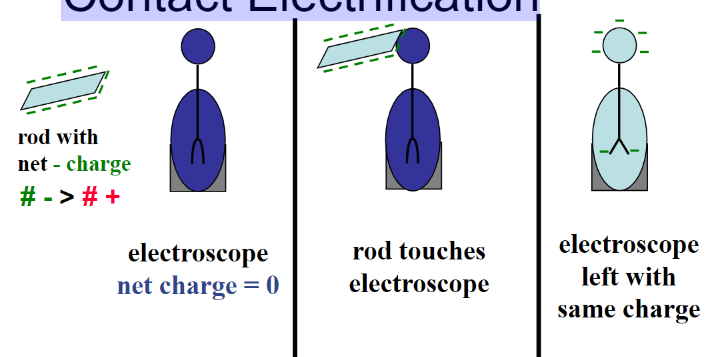
Induced Electrification of a Grounded Object
• grounding enables more permanent charge build up
( it has positive charge because it doesn’t touch. Metal has negative charge and it attract the electroscope, so electroscope has positive charge)
(people stand on earth. It is grounded)
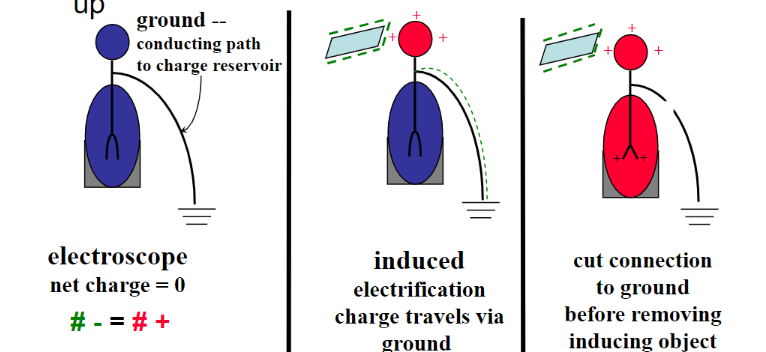
Laws of Electrostatics
1. Like charges repel; unlike attract
2. Coulomb's Law (Electrostatic Law)
The force between two charges is
– directly proportional to the magnitude of the two charges
&
– inversely proportional to the square of the distance between the objects (use inverse square law)

Electric Force Fields & Lines of Force
Negatives are usually selfish. They want everything for themselves.
Positives are usually helpful they want to give out.
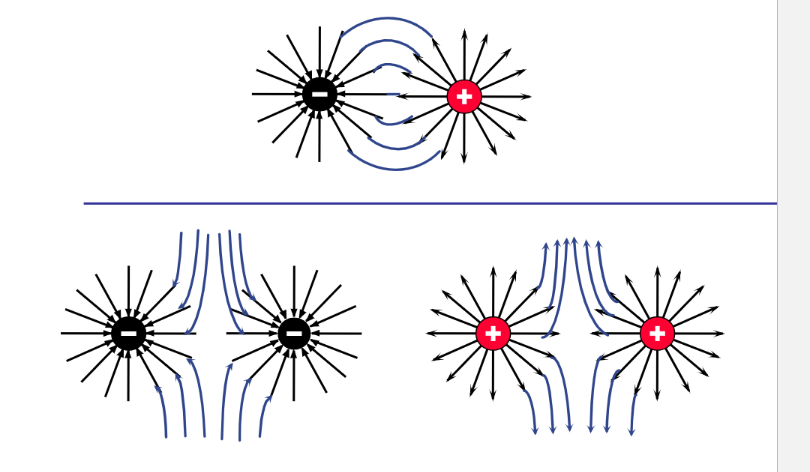
Two charges of 3 C and 4 C are placed one meter apart. What is the force between them?
What if the charges were then moved to two meters apart?
3C x 4C = 12 N
12N/i = 2²/1² => i = 3N
Distribution of charge
Over outer surface only of a dense conductor or a hollow object
(they have the same charge so they repel each other. They are spread out)
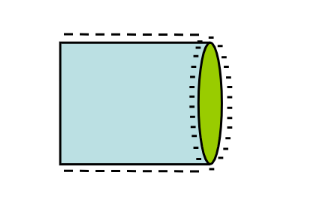
Concentration of charge
concentrated at sharpest curves on irregular objects
(it still repel but concentration on the top) (at the tip or sharpest end)
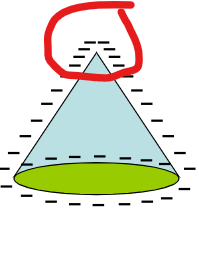
Lines of Force vs. Strength of Field
also call electrostatic flux line
• strong fields = more lines of force (more coulombs)
- strong field = closer lines of force (stronger the electric charge)
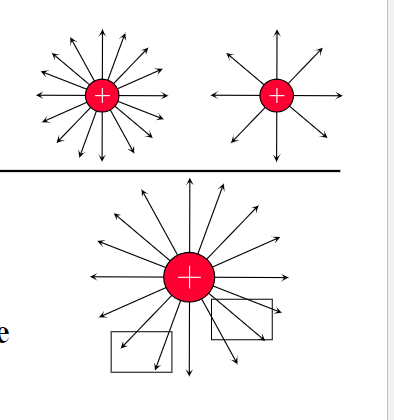
Two charges of 4 C and 5 C are placed one meter apart. What is the force between them?
4 C x 5 C = 20 N
Two charges of 4 C and 5 C are placed 2 meters apart. What is the force between them?
• What if the charges were then moved to 4 meters apart?
What if the charges were then moved to 1 meter apart?
4 C x 5 C = 20 N
20N/f = 4²/2² => f = 5 N
20N/f = 1²/2² => f = 80 N
Electrodynamics
• study of electric charges in motion
– circuit
• closed loop that conducts electricity
• path along which electrons can move battery (dynamic means motion)
(opposite attract. always move from negative to positive)
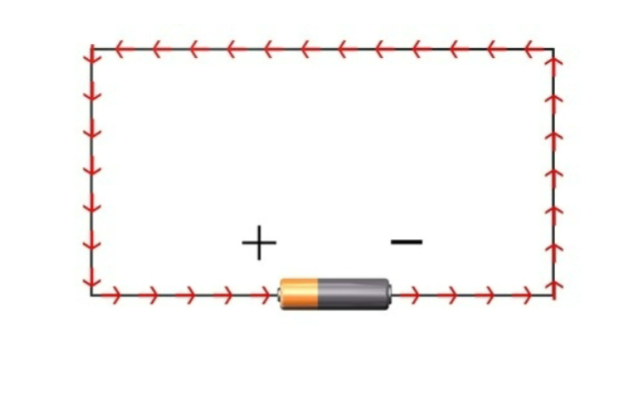
Conductor
• Allows electrons to flow (electricity passes by really easy)
• Examples: metal, water (copper, human tissue)
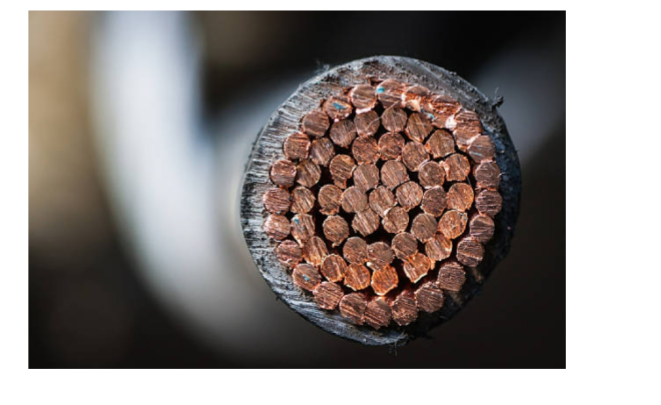
Insulator
• Nonconductor, dielectric
• Inhibits the flow of electrons
• Examples: rubber (not has elastic, malleablr) (wood)

Semiconductor
• Acts as both a conductor & an insulator
• Example: silicon (one of the best use for sillicones are in computers)
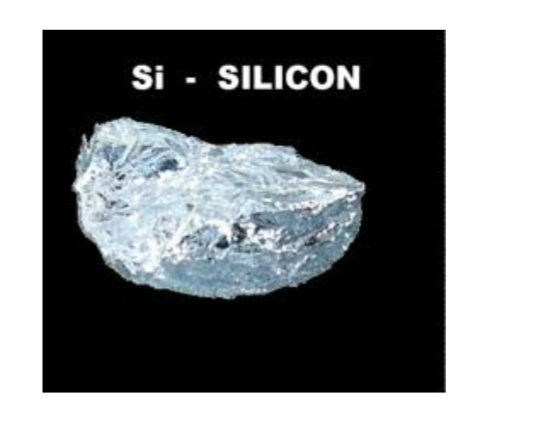
Superconductor
• Allows electrons to flow without resistance
• Examples: niobium, titanium
(need to be in very cold environment and it is very expensive)

Components of a Circuit
• Current (amperage) (I)
– (I for Intensite, the french word Andre-Marie Ampere to describe the intensity of current.) (measure in A. ex: 5A is the current is 5, A is amperage)
• Potential Difference (voltage) (V)
• Resistance (ohms) (R)
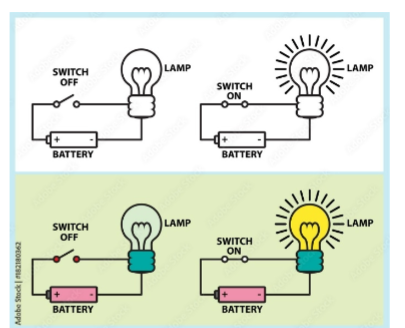
Unit of Current
• ampere (charge/time)
• amp A mA = .001A
– rate of electrons flowing per second
– 1A = 1C/s = 6.3 x 1018 e- / s
Potential Difference
Electromotive Force; EMF; voltage
• force that causes charges to move (no voltage, e will stay in negative side)
– electrical push or pull
– results in a current flow in a circuit
• work (energy) that moves charge from one point to another
If potentials are connected by a conducting path e- will flow from high - to low – (negative to positive)
electric potential : e not move
electric current : e move from - to +
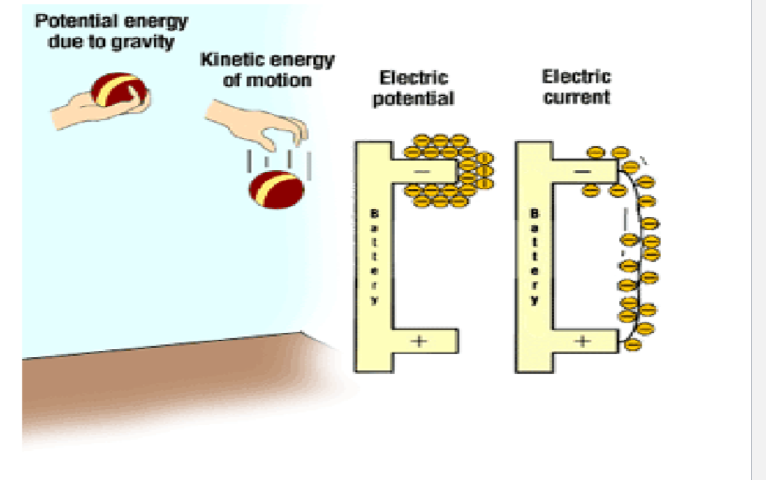
Resistance
symbol R
• ohm
• Anything that opposes or limits a current

Amount of R dependent on
– material
• conductor (low R) vs. insulator (high R) (e can not flow through)
– length of path
• Increase R with increase in length (direct relationship)
– cross sectional area
• R increase with decrease in cross section (example cross section is the inside of the wire after cut) (inverse relationship)
– temperature
• R increase with increase in temperature (direct relationship)
• superconductors: lose all R at extremely low temperatures
Electrical Hazards
Biological tissue is a good conductor (ions)
• Wet skin has less resistance to current flow than dry skin (R of body approximate 1000 ohm.)
• Body can be a conducting path when grounded
• Current’s effect on humans (don’t need to remember)
.5 mA detectable
5.0 mA painful
10.0 mA causes muscle contraction
18.0 mA breathing is impossible
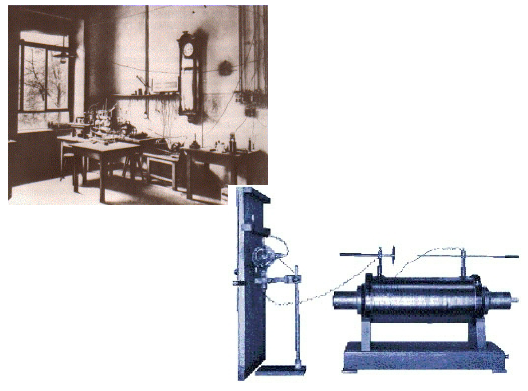
The old x-ray tube
Electrical Wires
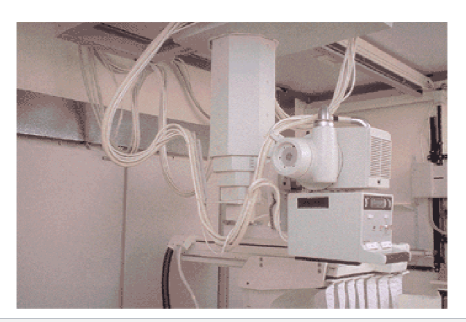
Components of a Circuit ( review)
• current symbol -- I
• potential difference symbol -- V
• resistance symbol -- R
flow from negative to positive
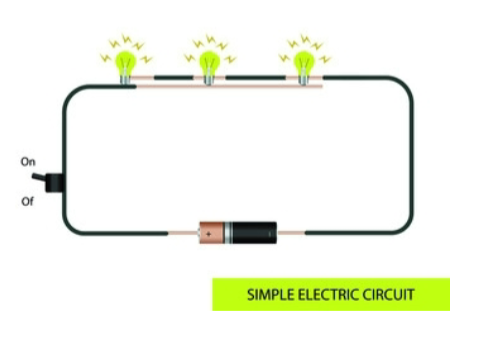
this electron flow is ignited by what?
voltage
Meters
• devices to determine electrical values in a circuit
the electric bulb is what?
resistance
voltmeter
– measures PD (potential difference)
– connected across load
(parallel connection)
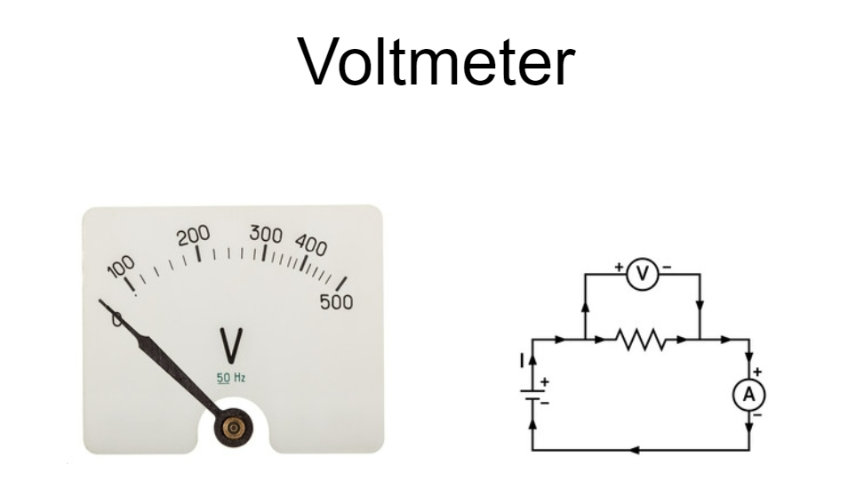
ammeter
– measures current
– connected in path so all e- pass through it (series connection)
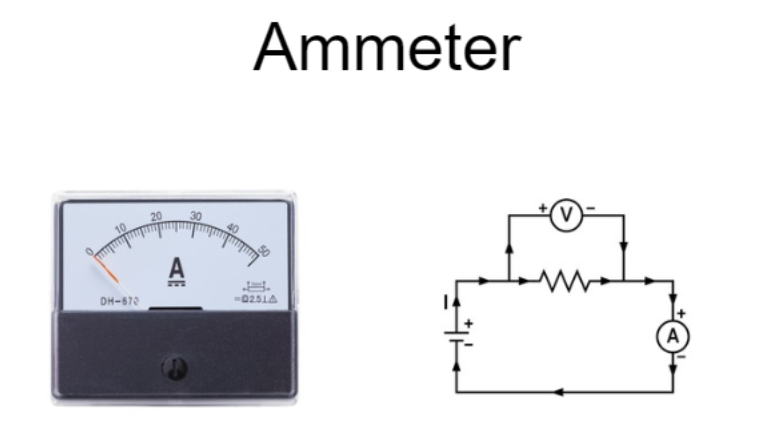
Ohm's Law (formula)
– Voltage in a circuit will be equal to the current times the resistance
V = I x R
Electric Power
• Amount of work that a circuit can do
• Rate of change in electrical energy
P = V x I = [I R] I = I2 R
unit = Watt W = J / s
– 1 A OF CURRENT THRU A PD OF 1 V (1V = 1 W)
Electrical Power Problem
• A 15A fuse is placed in a 110V power line. What is the maximum amount of power the line can carry before the fuse will activate?
P = I x V
= 15A x 110V
= 1650 W = 1650 W = 1.65 kW
or
Use Ohm’s Law to find Resistance:
R = 110/15
R = 7.33 ohms
• P = I2R = (15)2 (7.33) = 1649.25 W
Find the power of a 240 ohms light bulb that draws a 0.46A current.
P = I2 R = [0.46A]2 240 = 50.784 W = 51 W
Direct vs. Alternating Currents
• Direct Current (DC)
– e- flow in 1 direction through the circuit path
There are 2 type of direct current
Steady direct current (it will give the power until battery die)
Pulsed DC (go up and down)
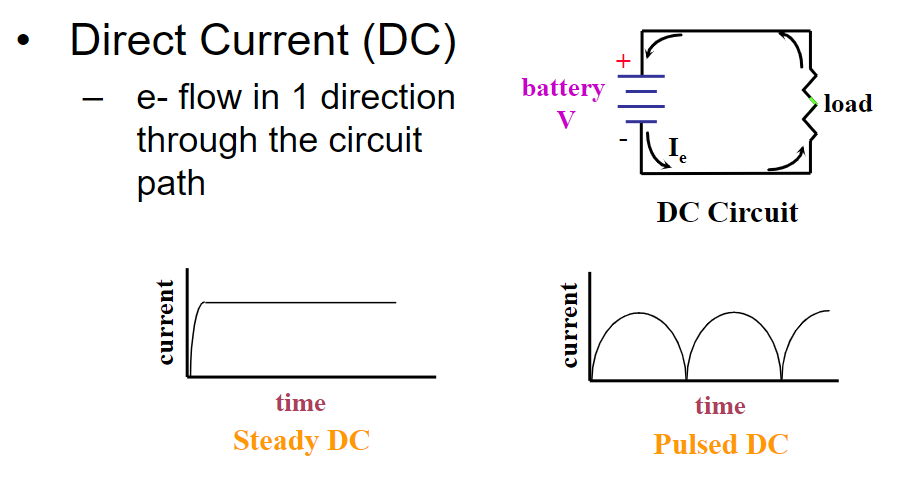
Alternating Current Review
• Alternating Current (AC)
– e- flow one way then the opposite way
– graph (sine wave)
• f = 60 Hz
• cycle = 360
• amplitude = size of I or V
• 1 cycle = 1/60 s
• Pulses/cycle = 2 (1 positive way and 1 negative way)

Capacitor
• device that temporarily stores charge in an electric circuit (it should be insulator) (it uses metal that store electricity)
(battery uses chemicals to produce potetial difference. Other uses voltage. Capacitor uses the metal part because they are great conductors to store electricity)

Capacitance
• ratio of charge stored to potential difference between plates
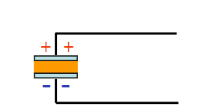
resistor
inhibits flow of electrons (light bulb, hair dryer, a light)

battery
provides electric potential

Capacitor
momentarily stores electric charge

ammeter (circuit element)
measures electric current

voltmeter
measures electric potential

switch
turns circuit on or off by providing infinite resistance

transformer
increases or decreases voltage by fixed amount (AC only)
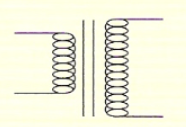
rheostat
variable resistor

diole
allows electrons to flow in only one direction
